
| Size | Price | Stock | Qty |
|---|---|---|---|
| 250mg |
|
||
| 500mg |
|
||
| 1g |
|
||
| 2g |
|
||
| 5g |
|
||
| 10g |
|
||
| Other Sizes |
|
Purity: ≥98%
Sertraline HCl (formerly CP 51,974-1; CP 51974-1; CP-51,974; trade names: Sealdin; Adjuvin; Atruline; Gladem; Tatig; Tresleen; Zoloft), the hydrochloride salt of Sertraline, is a potent and marketed antidepressant drug acting as a 5-HT serotonin receptor antagonist with Ki of 13 nM. Sertraline binds to the serotonin transporter with an affinity of Ki=2.8 nM, making it primarily a serotonin reuptake inhibitor (SRI). Compared to NE uptake, sertraline is more selective than fluvoxamine, zimelidine, norzimelidine, fluoxetine, or chlorimipramine in inhibiting 5-HT uptake. Sertraline, in contrast to these agents, is less selective in preventing 5-HT uptake than DA uptake. Moreover, sertraline (<50 nmol/L) inhibits the reuptake of dopamine. Its action is only 10% of its potency as a monoamine reuptake inhibitor, and this is not thought to be a tight binding. Its SRI potency ranges from 1% to 10% for α1-adrenoreceptor antagonists and 5% for σ1 receptor agonists.
| Targets |
5-HT ( Ki = 13 nM )
|
|
|---|---|---|
| ln Vitro |
|
|
| ln Vivo |
|
|
| Animal Protocol |
Aromatase-knockout (Ar−/−) mice
10 mg/kg A single i.p. administration |
|
| Toxicity/Toxicokinetics |
Effects During Pregnancy and Lactation
◉ Summary of Use during Lactation Because of the low levels of sertraline in breastmilk, amounts ingested by the infant are small and is usually not detected in the serum of the infant, although the weakly active metabolite norsertraline (desmethylsertraline) is often detectable in low levels in infant serum. Rarely, preterm infants with impaired metabolic activity might accumulate the drug and demonstrate symptoms similar to neonatal abstinence. Most authoritative reviewers consider sertraline a preferred antidepressants during breastfeeding. Mothers taking an SSRI during pregnancy and postpartum may have more difficulty breastfeeding, although this might be a reflection of their disease state. These mothers may need additional breastfeeding support. Breastfed infants exposed to an SSRI during the third trimester of pregnancy have a lower risk of poor neonatal adaptation than formula-fed infants. ◉ Effects in Breastfed Infants Benign neonatal sleep myoclonus occurred in one 4-month-old infant and agitation that spontaneously resolved whose mother was taking sertraline 75 mg daily. None of 26 infants with an average age of 16.6 weeks (range 4 to 28 weeks) whose mothers were receiving an average of 124 mg sertraline daily had any detectable acute adverse reactions to sertraline in breastmilk. All had been breastfeeding for at least 3 weeks. Whole blood serotonin levels were measured in 14 mothers and their breastfed infants after 6 to 16 weeks of sertraline therapy. Maternal dosages ranged from 25 to 200 mg daily. Although maternal serotonin levels were decreased from 159 mcg/L to 19 mcg/L by sertraline therapy, infant serotonin levels averaged 227 mcg/L before and 224 mcg/L after maternal therapy. The authors concluded that these findings indicate that the amount of sertraline ingested by the infants was not sufficient to affect platelet serotonin uptake in breastfed infants. Platelets and neurons both have the same serotonin transporter, so this lack of effect was seen as indirect evidence of safety of sertraline use during breastfeeding. None of the infants experienced any adverse effects from sertraline in breastmilk, including 6 exclusively breastfed infants under 3 months of age. Twenty-five mothers who took an average sertraline dosage of 82.4 mg daily breastfed their infants exclusively for 4 months and breastfed at least 50% during months 5 and 6. Their infants had 6-month weight gains that were normal according to national growth standards and the mothers reported no abnormal effects in their infants. In 6 infants aged 5 to 34 weeks whose mothers were taking sertraline 50 to 100 mg daily, no adverse reactions were noted clinically at the time of the study. No adverse effects were seen in 7 infants who were 4 weeks old and whose mothers had been taking sertraline 50 mg daily since day 4 postpartum. One study of side effects of SSRI antidepressants in nursing mothers found no adverse reactions that required medical attention among 2 infants whose mother was taking sertraline. No specific information on maternal sertraline dosage, extent of breastfeeding or infant age was reported. A small study compared the reaction to pain in infants of depressed mothers who had taken an SSRI during pregnancy alone or during pregnancy and nursing, to a control group of unexposed infants of nondepressed mothers. Infants exposed to an SSRI either prenatally alone or prenatally and postnatally via breastmilk had blunted responses to pain compared to control infants. Four of the 30 infants were exposed to sertraline. Because there was no control group of depressed, nonmedicated mothers, an effect due to maternal behavior caused by depression could not be ruled out. The authors stressed that these findings did not warrant avoiding drug treatment of depression during pregnancy or avoiding breastfeeding during SSRI treatment. An uncontrolled online survey compiled data on 930 mothers who nursed their infants while taking an antidepressant. Infant drug discontinuation symptoms (e.g., irritability, low body temperature, uncontrollable crying, eating and sleeping disorders) were reported in about 10% of infants. Mothers who took antidepressants only during breastfeeding were much less likely to notice symptoms of drug discontinuation in their infants than those who took the drug in pregnancy and lactation. In a telephone follow-up study, 124 mothers who took a benzodiazepine while nursing reported whether their infants had any signs of sedation. One mother who was taking sertraline 50 mg daily, zopiclone 2.5 mg about every 3 days as needed, and also took alprazolam 0.25 mg on 2 occasions, reported sedation in her breastfed infant. A mother was taking sertraline 150 mg daily during gestation, at delivery and postpartum while exclusively breastfeeding her infant. Her preterm infant born by cesarean section at 33 weeks gestation developed hyperthermia, muscle tone regulation disorders, and high-pitched crying during the first 24 hours after birth. The symptoms worsened on the 4th day of life, but breastfeeding was continued. On day 5, the infant had serum concentrations of sertraline and its metabolite that are in the reported therapeutic range in adults. Breastfeeding was discontinued on day 9 postpartum and the infant's symptoms dissipated, serum drug levels decreased, and the infant thrived over several months. The infant was later found to have genetically intermediate metabolism of two of the CYP450 enzymes involved in sertraline metabolism. The authors attributed the infant's symptoms to serotonergic overstimulation caused by persistently high sertraline levels from breastfeeding and reduced metabolism. The reaction was probably caused by sertraline. An infant was being breastfed (extent not stated) by a mother who began taking sertraline 50 mg daily and methylphenidate after 5 weeks postpartum. Dosage was started at 10 mg daily with an immediate-release product and gradually increased to 72 mg daily of an extended-release product. At 14 weeks of age, the infant was developing normally with no feeding difficulties. Examinations at 6 months and 1 year of age found no developmental problems in the child. In a study of sertraline for postpartum depression, 11 women completed the full 7-week duration of the study out of 36 who were entered. Six mothers reported breastfeeding their infants (extent not stated) and 5 did not breastfeed their infants. The average sertraline dose in week 7 was 100 mg daily. No side effects were reported for any of the infants in the sertraline or placebo groups at this time. Authors of a meta-analysis on sertraline reported 25 infants who were breastfed by mothers taking sertraline. Ten of the infants were exclusively breastfed, two were 80% breastfed and the breastfeeding status of the others was not reported. No adverse reactions occurred. A cohort of 247 infants exposed to an antidepressant in utero during the third trimester of pregnancy were assessed for poor neonatal adaptation (PNA). Of the 247 infants, 154 developed PNA. Infants who were exclusively given formula had about 3 times the risk of developing PNA as those who were exclusively or partially breastfed. Sixty-eight of the infants were exposed to sertraline in utero. A retrospective study of 30 nursing mothers who had been seen at a psychiatric outpatient facility, followed for at least 8 weeks, and prescribed sertraline found that adverse effects were reported in 5 (13%) of their infants. One mother was taking 25 mg daily, 3 mothers were taking 50 mg daily and 1 was taking 100 mg daily. The most commonly reported adverse events in the infants were insomnia and restlessness; constant crying and poor feeding were less commonly reported. All of the adverse effects developed within the first 2 weeks after initiation of maternal treatment and disappeared within the 3 days after drug discontinuation. Adverse effects failed to disappear in one infant after reducing the maternal dosage from 50 mg daily to 25 mg daily. There was no difference in prevalence of adverse effects between these infants and those in the same study whose mothers were prescribed paroxetine. A 12-day-old exclusively breastfed male infant presented with severe weight loss and hypernatremic dehydration because of inadequate milk intake and a 30% weight loss since birth. The infant's mother was being treated for bipolar disorder with lamotrigine 250 mg orally once daily, aripiprazole 15 mg orally once daily, and sertraline 100 mg orally once daily. She was also taking levothyroxine 50 mcg once daily, a prenatal multivitamin, and folic acid. On initial evaluation in the emergency department, he was pale, with marbled skin, dry mucous membranes, decreased skin turgor, and bluish feet with prolonged capillary refill. The right foot eventually became darker with blackened toes, and he developed gangrene of the right lower limb, which did not respond to medical therapy and required amputation of all five toes and surgical debridement of the metatarsals. Necrosis was attributed to arterial microthrombi caused by disseminated intravascular coagulation after severe dehydration. The authors considered the mother's medications as a possible cause of the dehydration and related problems. A mother who was exclusively breastfeeding a 2-month-old infant began taking sertraline 50 mg daily for depression. Six days later, restlessness and a dramatic decrease in the duration of sleep in the baby was reported. Sertraline was discontinued and the symptoms completely resolved within 3 days. No abnormalities were seen on physical examination or laboratory tests. The infant subsequently developed severe constipation with maternal paroxetine use, but tolerated maternal citalopram use. A mother who was 3 months postpartum was treated for depression with sertraline 50 mg in the morning and olanzapine 1.25 mg at night at night for sleep. After 2 weeks, the sertraline dosage was increased to 25 mg in the morning and 50 mg at night. Five days after the dosage increase, her breastfed infant began having diarrhea about 15 minutes after each feeding. She continued the medication and provided oral rehydration solution to the infant. The diarrhea resolved after 2 weeks. The diarrhea was probably caused by sertraline in breastmilk. Nine women treated with sertraline 25 to 75 mg daily (7 were taking 50 mg daily) during the third trimester of pregnancy and during breastfeeding. Pediatric evaluations including neurologic assessments and brain ultrasound were conducted during the first 24 hours postpartum. Further follow-up was conducted at 6 or more months of age. Infant clinical status was comparable to unexposed infants from the same pediatric department. A case-control study in Israel compared 280 infants of nursing mothers taking long-term psychotropic drugs to the infants of 152 women taking antibiotics. Infant sleepiness at 3 days of age was reported by 1 mother taking sertraline during pregnancy and breastfeeding and by none taking antibiotics. The sleepiness resolved within 24 hours with no developmental effect. A prospective study of nursing mothers who called to a lactation service in Poland found 4 with sertraline-induced adverse effects in breastfed infants. These included 3 with infant colic that were rated possible and one probable case of sinus tachycardia in a 3-week-old exclusively breastfed infant whose mother was taking 50 mg daily. ◉ Effects on Lactation and Breastmilk Sertraline has caused galactorrhea in nonpregnant, nonnursing patients, sometimes with normal serum prolactin. However, in a study of cases of hyperprolactinemia and its symptoms (e.g., gynecomastia) reported to a French pharmacovigilance center, sertraline was not found to have an increased risk of causing hyperprolactinemia compared to other drugs. The prolactin level in a mother with established lactation may not affect her ability to breastfeed. A midwife observed 6 patients who reported a decrease in milk supply after starting sertraline (dosages not reported). One of the mothers had been taking sertraline since the 6th month of pregnancy. She reported an increase in milk supply when she stopped sertraline for one week at 4 months postpartum. When she restarted sertraline, her milk supply reportedly decreased. In all of the women, the milk supply increased in 2 to 3 days after increasing fluid and the frequency of nursing. In a small prospective study, 8 primiparous women who were taking a serotonin reuptake inhibitor (SRI; 3 taking fluoxetine and 1 each taking citalopram, duloxetine, escitalopram, paroxetine or sertraline) were compared to 423 mothers who were not taking an SRI. Mothers taking an SRI had an onset of milk secretory activation (lactogenesis II) that was delayed by an average of 16.7 hours compared to controls (85.8 hours postpartum in the SRI-treated mothers and 69.1 h in the untreated mothers), which doubled the risk of delayed feeding behavior in the untreated group. However, the delay in lactogenesis II may not be clinically important, since there was no statistically significant difference between the groups in the percentage of mothers experiencing feeding difficulties after day 4 postpartum. A case control study compared the rate of predominant breastfeeding at 2 weeks postpartum in mothers who took an SSRI antidepressant throughout pregnancy and at delivery (n = 167) or an SSRI during pregnancy only (n = 117) to a control group of mothers who took no antidepressants (n = 182). Among the two groups who had taken an SSRI, 33 took citalopram, 18 took escitalopram, 63 took fluoxetine, 2 took fluvoxamine, 78 took paroxetine, and 87 took sertraline. Among the women who took an SSRI, the breastfeeding rate at 2 weeks postpartum was 27% to 33% lower than mother who did not take antidepressants, with no statistical difference in breastfeeding rates between the SSRI-exposed groups. An observational study looked at outcomes of 2859 women who took an antidepressant during the 2 years prior to pregnancy. Compared to women who did not take an antidepressant during pregnancy, mothers who took an antidepressant during all 3 trimesters of pregnancy were 37% less likely to be breastfeeding upon hospital discharge. Mothers who took an antidepressant only during the third trimester were 75% less likely to be breastfeeding at discharge. Those who took an antidepressant only during the first and second trimesters did not have a reduced likelihood of breastfeeding at discharge. The antidepressants used by the mothers were not specified. A retrospective cohort study of hospital electronic medical records from 2001 to 2008 compared women who had been dispensed an antidepressant during late gestation (n = 575; sertraline n = 200) to those who had a psychiatric illness but did not receive an antidepressant (n = 1552) and mothers who did not have a psychiatric diagnosis (n = 30,535). Women who received an antidepressant were 37% less likely to be breastfeeding at discharge than women without a psychiatric diagnosis, but no less likely to be breastfeeding than untreated mothers with a psychiatric diagnosis. In a study of 80,882 Norwegian mother-infant pairs from 1999 to 2008, new postpartum antidepressant use was reported by 392 women and 201 reported that they continued antidepressants from pregnancy. Compared with the unexposed comparison group, late pregnancy antidepressant use was associated with a 7% reduced likelihood of breastfeeding initiation, but with no effect on breastfeeding duration or exclusivity. Compared with the unexposed comparison group, new or restarted antidepressant use was associated with a 63% reduced likelihood of predominant, and a 51% reduced likelihood of any breastfeeding at 6 months, as well as a 2.6-fold increased risk of abrupt breastfeeding discontinuation. Specific antidepressants were not mentioned. |
|
| References | ||
| Additional Infomation |
Sertraline hydrochloride is a hydrochloride resulting from the reaction of equimolar amounts of sertraline and hydrogen chloride. A selective serotonin-reuptake inhibitor (SSRI), it is administered orally as an antidepressant for the treatment of depression, obsessive-compulsive disorder, panic disorder and post-traumatic stress disorder. It has a role as a serotonin uptake inhibitor and an antidepressant. It contains a sertraline(1+).
Sertraline Hydrochloride is the hydrochloride salt of sertraline, a synthetic derivative of naphthalenamine with anti-serotoninergic and anti-depressant properties. Sertraline appears to selectively inhibit the neuronal uptake of serotonin, raising serotonin levels in the CNS. A selective serotonin uptake inhibitor that is used in the treatment of depression. See also: Sertraline (has active moiety). |
| Molecular Formula |
C17H18CL3N
|
|
|---|---|---|
| Molecular Weight |
342.69
|
|
| Exact Mass |
341.05
|
|
| Elemental Analysis |
C, 59.58; H, 5.29; Cl, 31.04; N, 4.09
|
|
| CAS # |
79559-97-0
|
|
| Related CAS # |
(±)-cis-Sertraline-d3 hydrochloride; 1217741-83-7; rel-Sertraline-d3 hydrochloride; 1330180-66-9; 79617-96-2
|
|
| PubChem CID |
63009
|
|
| Appearance |
White to off-white solid powder
|
|
| Boiling Point |
416.3ºC at 760 mmHg
|
|
| Melting Point |
246-249°C
|
|
| Flash Point |
205.6ºC
|
|
| LogP |
6.372
|
|
| Hydrogen Bond Donor Count |
2
|
|
| Hydrogen Bond Acceptor Count |
1
|
|
| Rotatable Bond Count |
2
|
|
| Heavy Atom Count |
21
|
|
| Complexity |
322
|
|
| Defined Atom Stereocenter Count |
2
|
|
| SMILES |
N([C@H]1CC[C@@H](C2C=CC(Cl)=C(Cl)C=2)C2C=CC=CC1=2)C.Cl
|
|
| InChi Key |
BLFQGGGGFNSJKA-XHXSRVRCSA-N
|
|
| InChi Code |
InChI=1S/C17H17Cl2N.ClH/c1-20-17-9-7-12(13-4-2-3-5-14(13)17)11-6-8-15(18)16(19)10-11;/h2-6,8,10,12,17,20H,7,9H2,1H3;1H/t12-,17-;/m0./s1
|
|
| Chemical Name |
(1S,4S)-4-(3,4-dichlorophenyl)-N-methyl-1,2,3,4-tetrahydronaphthalen-1-amine;hydrochloride
|
|
| Synonyms |
|
|
| HS Tariff Code |
2934.99.9001
|
|
| Storage |
Powder -20°C 3 years 4°C 2 years In solvent -80°C 6 months -20°C 1 month Note: Please store this product in a sealed and protected environment, avoid exposure to moisture. |
|
| Shipping Condition |
Room temperature (This product is stable at ambient temperature for a few days during ordinary shipping and time spent in Customs)
|
| Solubility (In Vitro) |
|
|||
|---|---|---|---|---|
| Solubility (In Vivo) |
Solubility in Formulation 1: ≥ 2.5 mg/mL (7.30 mM) (saturation unknown) in 10% DMSO + 40% PEG300 + 5% Tween80 + 45% Saline (add these co-solvents sequentially from left to right, and one by one), clear solution.
For example, if 1 mL of working solution is to be prepared, you can add 100 μL of 25.0 mg/mL clear DMSO stock solution to 400 μL PEG300 and mix evenly; then add 50 μL Tween-80 to the above solution and mix evenly; then add 450 μL normal saline to adjust the volume to 1 mL. Preparation of saline: Dissolve 0.9 g of sodium chloride in 100 mL ddH₂ O to obtain a clear solution. Solubility in Formulation 2: ≥ 2.5 mg/mL (7.30 mM) (saturation unknown) in 10% DMSO + 90% (20% SBE-β-CD in Saline) (add these co-solvents sequentially from left to right, and one by one), clear solution. For example, if 1 mL of working solution is to be prepared, you can add 100 μL of 25.0 mg/mL clear DMSO stock solution to 900 μL of 20% SBE-β-CD physiological saline solution and mix evenly. Preparation of 20% SBE-β-CD in Saline (4°C,1 week): Dissolve 2 g SBE-β-CD in 10 mL saline to obtain a clear solution. View More
Solubility in Formulation 3: ≥ 2.5 mg/mL (7.30 mM) (saturation unknown) in 10% DMSO + 90% Corn Oil (add these co-solvents sequentially from left to right, and one by one), clear solution. Solubility in Formulation 4: 30% PEG400+0.5% Tween80+5% Propylene glycol : 5 mg/mL |
| Preparing Stock Solutions | 1 mg | 5 mg | 10 mg | |
| 1 mM | 2.9181 mL | 14.5904 mL | 29.1809 mL | |
| 5 mM | 0.5836 mL | 2.9181 mL | 5.8362 mL | |
| 10 mM | 0.2918 mL | 1.4590 mL | 2.9181 mL |
*Note: Please select an appropriate solvent for the preparation of stock solution based on your experiment needs. For most products, DMSO can be used for preparing stock solutions (e.g. 5 mM, 10 mM, or 20 mM concentration); some products with high aqueous solubility may be dissolved in water directly. Solubility information is available at the above Solubility Data section. Once the stock solution is prepared, aliquot it to routine usage volumes and store at -20°C or -80°C. Avoid repeated freeze and thaw cycles.
Calculation results
Working concentration: mg/mL;
Method for preparing DMSO stock solution: mg drug pre-dissolved in μL DMSO (stock solution concentration mg/mL). Please contact us first if the concentration exceeds the DMSO solubility of the batch of drug.
Method for preparing in vivo formulation::Take μL DMSO stock solution, next add μL PEG300, mix and clarify, next addμL Tween 80, mix and clarify, next add μL ddH2O,mix and clarify.
(1) Please be sure that the solution is clear before the addition of next solvent. Dissolution methods like vortex, ultrasound or warming and heat may be used to aid dissolving.
(2) Be sure to add the solvent(s) in order.
| NCT Number | Recruitment | interventions | Conditions | Sponsor/Collaborators | Start Date | Phases |
| NCT00667121 | Active Recruiting |
Drug: sertraline hydrochloride Drug: venlafaxine Drug: gabapentin |
Breast Cancer Depression Hot Flashes |
Mayo Clinic | March 16, 2011 | N/A |
| NCT05930912 | Active Recruiting |
Drug: sertraline 50mg Drug: Duloxetine 20 MG |
PTSD OCD Grief |
Yang I. Pachankis, PhD | June 1, 2023 | N/A |
| NCT04963257 | Recruiting | Drug: sertraline fluvoxamine Drug: sertraline |
OCD | Second Affiliated Hospital, School of Medicine, Zhejiang University |
January 1, 2020 | Phase 4 |
| NCT04221997 | Recruiting | Drug: sertraline | Anxiety Disorders | University of Cincinnati | November 1, 2019 | Phase 4 |
| NCT05646693 | Recruiting | Drug: Sertraline Drug: Placebo |
SSRI Oxidative Stress Psychiatric Drugs |
University of Guadalajara | December 1, 2022 | Phase 2 |
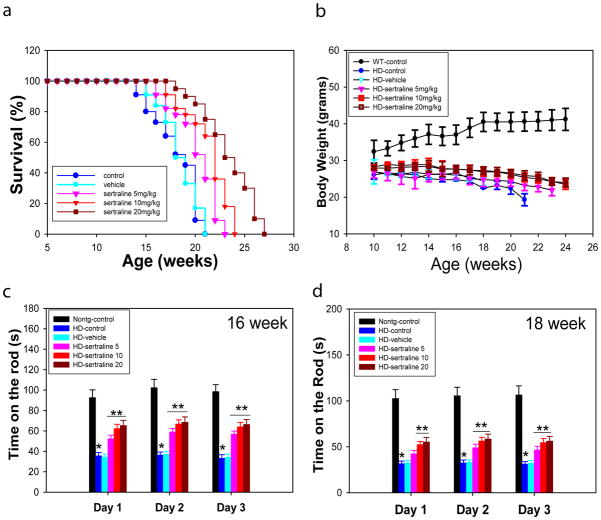 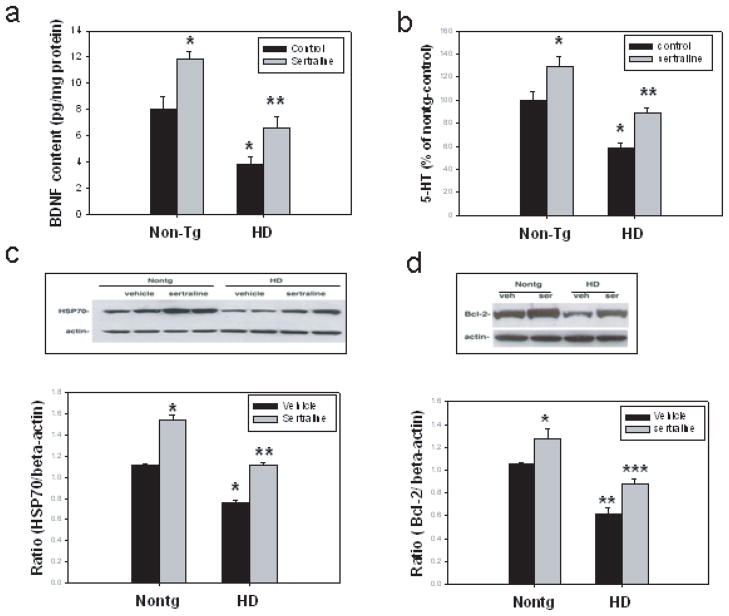 |
|---|
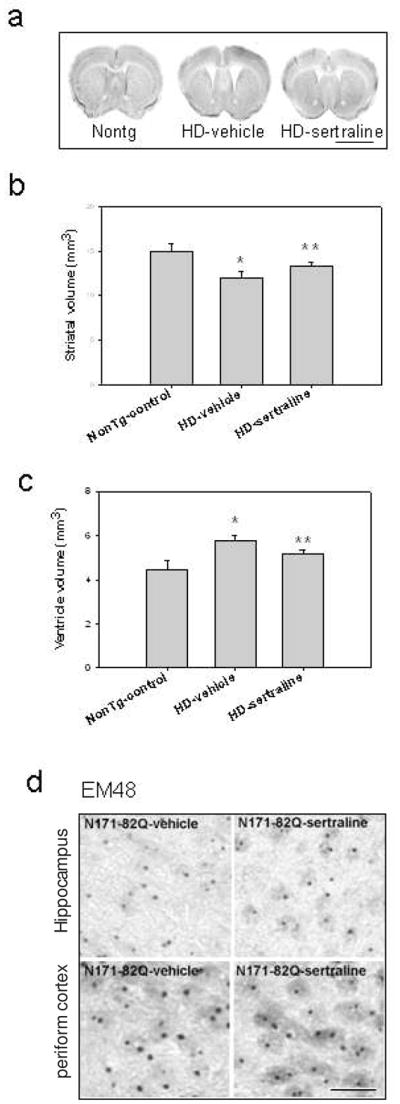 |
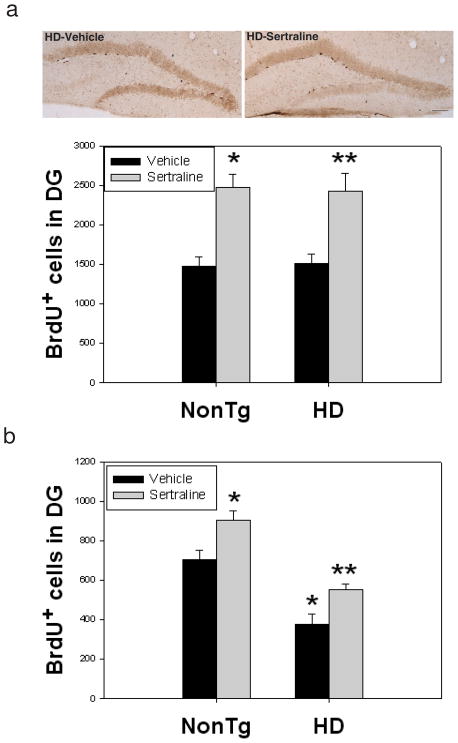 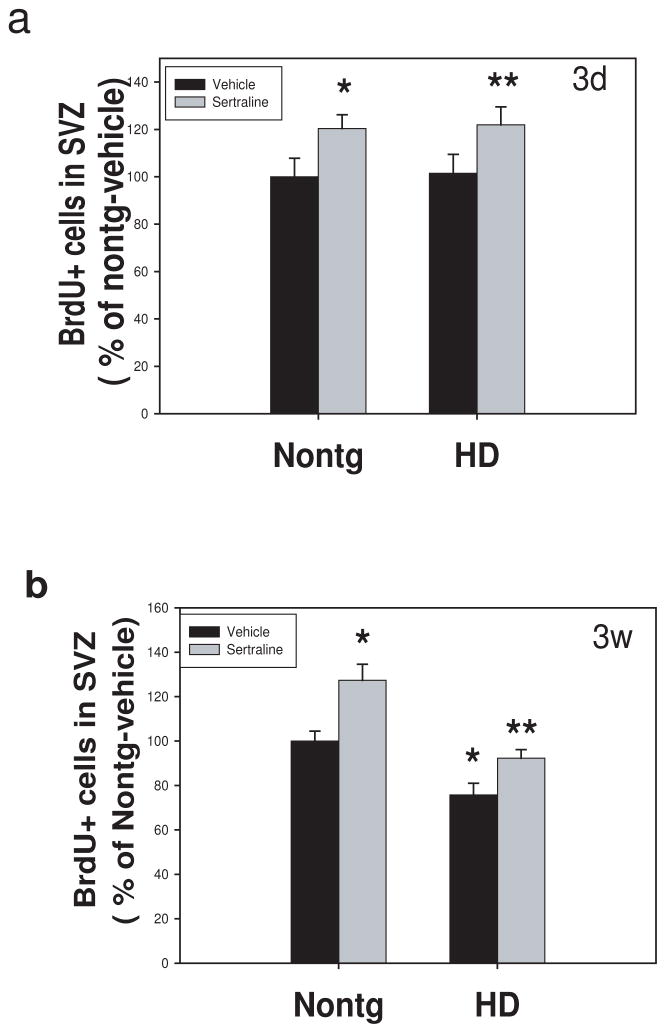 |